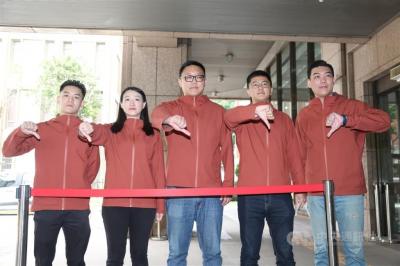It sounds like an assignment from a creative writing class -- make up a story about how the captain and crew vanished from a boat found drifting on the high seas.
It's not. It's a real-life riddle that Australian investigators are trying to solve by piecing together the movements of the High Aim 6 between Oct. 31, when it left the port of Liuchiu, and Jan. 8, when it was boarded by navy personnel 250km off the west coast of Broome in Western Australia.
The first guess was that the Taiwanese-owned, Indonesian-flagged fishing boat ran out of fuel, leaving those on board with the option of drifting out into the Indian Ocean or taking to the lifeboats and seeking a safe shore on Australia's west coast.
But that theory is easily dismissed. There was plenty of fuel, as well as food and water, on the modern long-line fishing boat -- and there is no evidence that lifeboats were launched.
Another possibility is that the 20m vessel was boarded by pirates sometime late in December after the owners, Tsai Huang Shueh-er, spoke by radio telephone to the captain.
This also seems unlikely. There was no sign of a struggle and the hijackers almost certainly would have made off with the boat.
Personal belongings were found on the 130-tonne vessel. There were seven toothbrushes -- indicating that as well as the Taiwanese captain and first mate there were at least five Indonesian crew.
The initial suspicions were that the High Aim 6 was carrying illegal migrants intending to claim asylum when they reached Australia.
But in the hold was a catch of rotting fish, evidence that the ship was a legitimate fishing vessel.
Australian investigators freely admit that they are stumped.
Geoff Rohan, of the Australian Fisheries Management Authority, is even considering the possibility that the High Aim 6 may have drifted without a crew from the US' Marshall Islands, its last known location.
A search of 24,000km2 around where the boat was intercepted has failed to find any trace of the captain and crew.
Police spokesman Bill Graham said that "as time goes on, the prospects of locating the crew alive decrease."
Among the oddities is that when the High Aim 6 was first sighted, the motor was running and the propeller was turning. The ship was underway.
But when it was boarded five days later, the engine was dead. The rudder lock was on, forcing the ship to drift in one direction rather than float around in circles.
A line of enquiry is that the boat was in the vicinity of South Pacific cyclones at the start of the month. The gale-force winds could have sparked an emergency that forced the crew to leave their ship.
But that, too, is a long shot.
Lee Ah-duey, director of the Liu Chiou District Fishing Association in southern Taiwan said that the best clue into their fate is a record of calls made on Bali with a mobile phone belonging to the chief engineer, Lin Chung-lee (林中立).
Phone records show that 87 local calls were made on Bali with the phone, said Lee, who had no other details.
The crew's disappearance in calm waters is reminiscent of the ill-fated Marie Celeste, found drifting in the Atlantic in 1872.
That mystery wasn't solved.

Taiwan is stepping up plans to create self-sufficient supply chains for combat drones and increase foreign orders from the US to counter China’s numerical superiority, a defense official said on Saturday. Commenting on condition of anonymity, the official said the nation’s armed forces are in agreement with US Admiral Samuel Paparo’s assessment that Taiwan’s military must be prepared to turn the nation’s waters into a “hellscape” for the Chinese People’s Liberation Army (PLA). Paparo, the commander of the US Indo-Pacific Command, reiterated the concept during a Congressional hearing in Washington on Wednesday. He first coined the term in a security conference last

Prosecutors today declined to say who was questioned regarding alleged forgery on petitions to recall Democratic Progressive Party (DPP) legislators, after Chinese-language media earlier reported that members of the Chinese Nationalist Party (KMT) Youth League were brought in for questioning. The Ministry of Justice Investigation Bureau confirmed that two people had been questioned, but did not disclose any further information about the ongoing investigation. KMT Youth League members Lee Hsiao-liang (李孝亮) and Liu Szu-yin (劉思吟) — who are leading the effort to recall DPP caucus chief executive Rosalia Wu (吳思瑤) and Legislator Wu Pei-yi (吳沛憶) — both posted on Facebook saying: “I

The Ministry of Economic Affairs has fined Taobao NT$1.2 million (US$36,912) for advertisements that exceed its approved business scope, requiring the Chinese e-commerce platform to make corrections in the first half of this year or its license may be revoked. Lawmakers have called for stricter enforcement of Chinese e-commerce platforms and measures to prevent China from laundering its goods through Taiwan in response to US President Donald Trump’s heavy tariffs on China. The Legislative Yuan’s Finance Committee met today to discuss policies to prevent China from dumping goods in Taiwan, inviting government agencies to report. Democratic Progressive Party Legislator Kuo Kuo-wen (郭國文) said

The Ministry of Economic Affairs has fined Taobao NT$1.2 million (US$36,900) for advertisements that exceeded its approved business scope and ordered the Chinese e-commerce platform to make corrections in the first half of this year or its license would be revoked. Lawmakers have called for stricter supervision of Chinese e-commerce platforms and more stringent measures to prevent China from laundering its goods through Taiwan as US President Donald Trump’s administration cracks down on origin laundering. The legislature’s Finance Committee yesterday met to discuss policies to prevent China from dumping goods in Taiwan, inviting government agencies to report on the matter. Democratic Progressive Party